Versatile, strong and readily available, concrete is one of the most widely used outdoor materials. Though it’s sometimes thought of as cold or even dull, its design potential for paths, patios, walls and other features is almost limitless. It can be cast in nearly any form or shape and offers tremendous flexibility in terms of color and texture. Here are a few points to consider when designing concrete surfaces.
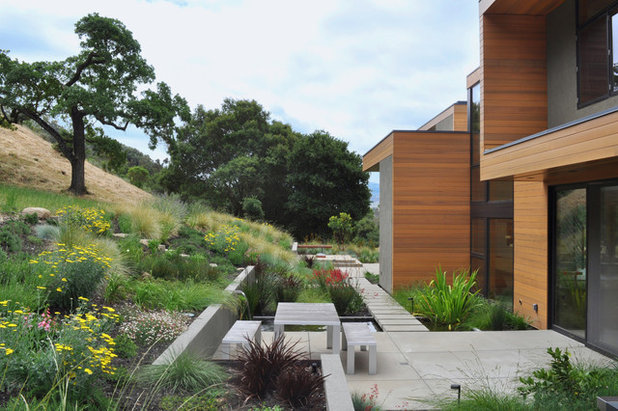
Huettl Landscape Architecture
The basics. Concrete is a mixture of paste and aggregates, or rocks. The paste, composed of Portland cement and water, coats the surface of the fine (small) and coarse (larger) aggregates. As the paste hardens, it gains strength to form the rock-like mass known as concrete.
In this process lies the key to a remarkable trait of concrete: It’s plastic and malleable when newly mixed, strong and durable when hardened.
Cost. Concrete outdoor features typically cost less than those made of stone, brick or tile. You’ll need to budget for the material cost (the concrete itself), site preparation and grading, gravel or sand sub base, and concrete forms and finishing.
Patios and walkways cost $6 (no color additives, broom finish) to $15 and up (coloring or other decorative techniques) per square foot; retaining walls will run $30 to $40 per square foot for a basic design.
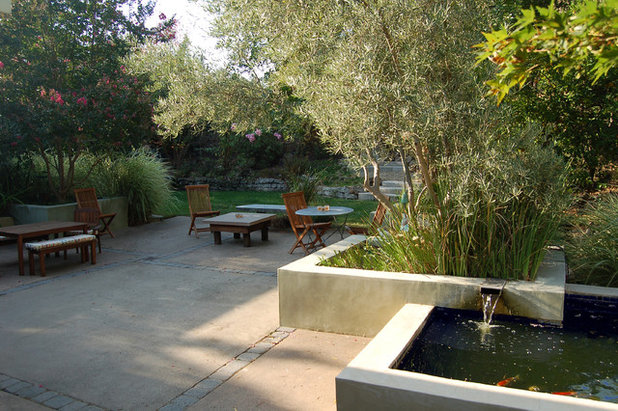
Huettl Landscape Architecture
Limitations. Concrete has a tendency to crack due to expansion and contraction. When concrete is used as paving, cracking can be minimized by installing control joints when the concrete is placed. Control joints are essentially planned cracks that allow for movement caused by temperature changes and drying shrinkage. Handled well, joints can become an opportunity to line up and link various elements of the design. Here dry-laid concrete pavers provide ribbons of interest within 6-inch joints.
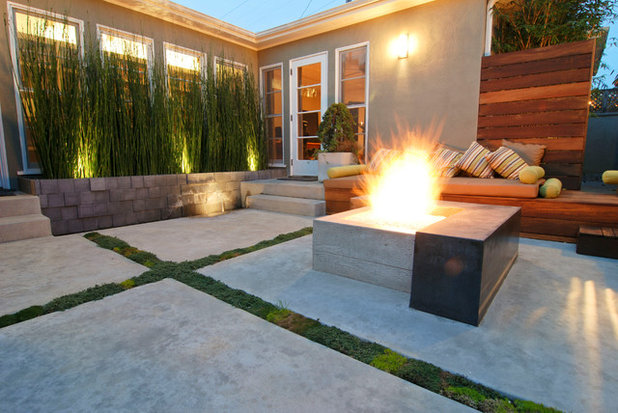
Falling Waters Landscape
Joints can also be planted, lined with synthetic turf or filled with gravel or pebbles. All of these treatments increase the permeability of the paving, an important aspect of sustainable gardens.
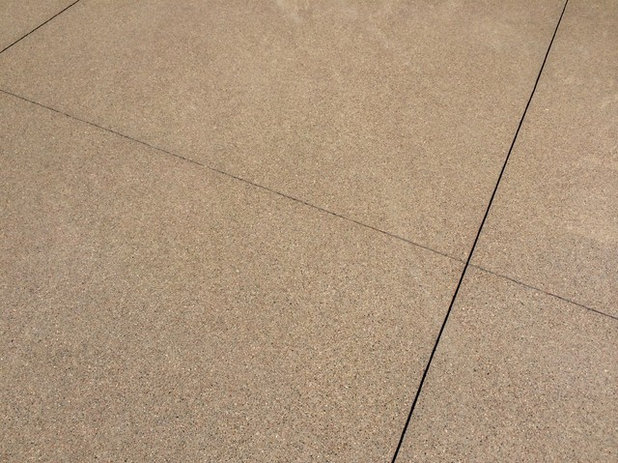
Pantheon Builders, Inc.
Design OptionsTexture. Concrete paving is often given a surface treatment to improve its traction and appearance.
- Sand finish: Sand finishing gives concrete a lightly edged surface. Once the concrete is placed, special retardants are applied to etch away a thin film of the surface. After a curing period, the surface is scrubbed with machinery to remove and expose only the sand matrix of the mix.
- Acid-etch finish: Acid etching produces a surface closely resembling that of limestone, brownstone or sandstone. After the cast element is removed from the form, the concrete is washed with an acid solution and scrubbed to remove the surface cement. With this method the exposed sand retains more sparkle than with light sandblasting.
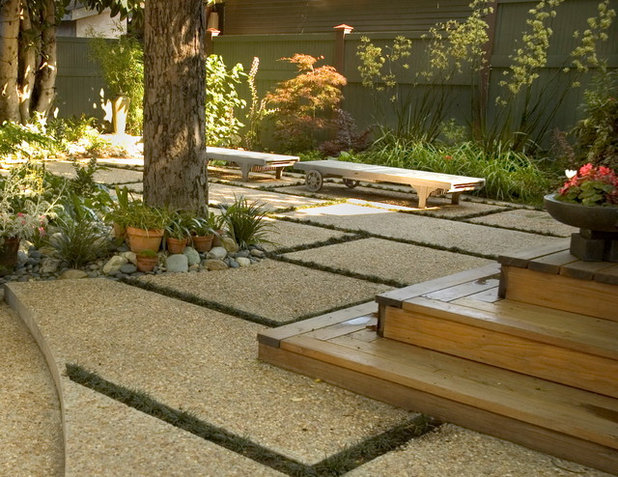
June Scott Design
- Exposed aggregate: This finish has a coarser texture than that of sand-finished or acid-etched concrete. It is created by casting the concrete against a form surface that has been painted with a retarder to slow the set of the concrete. After the form is removed, the retarded concrete is stripped away to reveal the beauty and texture of the underlying aggregate. Endless variations are possible, depending on the type of aggregate used and degree of exposure. In this example pebble-like Coral Sea gravel was exposed to provide a warm, shimmery texture. Because of its skid resistance, an exposed aggregate finish is ideal for most flat underfoot surfaces, such as sidewalks and patio floors.
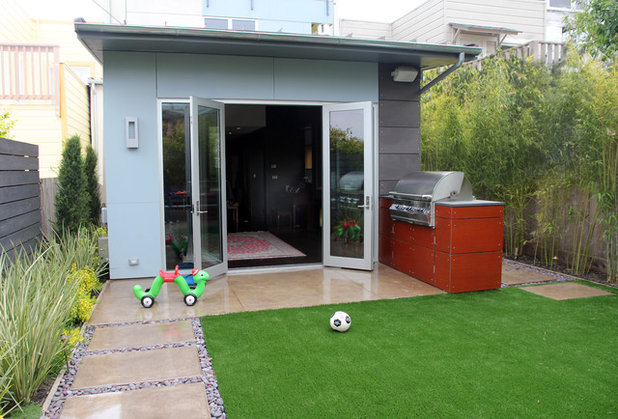
Boxleaf Design, Inc.
Color. Two popular ways to color freshly poured concrete are using integral coloring admixtures or dry-shake color hardeners. In addition color hardeners can improve the surface hardness and durability of concrete. A range of colored pigments are available. Neutrals such as brown, tan and gray tend to be less subject to fading than red, green and blue.
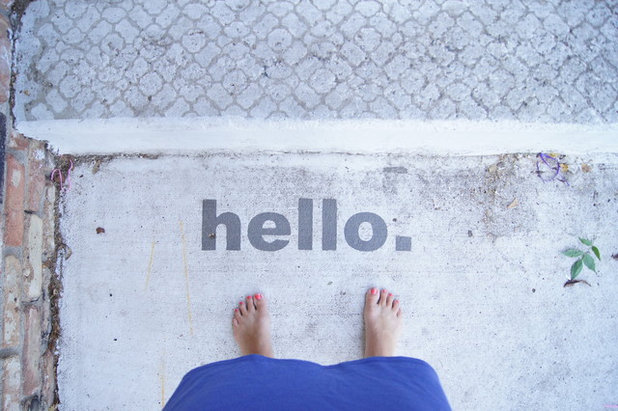
Wind and Willow Home
Refurbishing Existing ConcreteUsing a
microtopping with a stencil can be an economical way to enliven a worn concrete area. Microtoppings, or thin-section overlays, run the spectrum from spray deck products for driveways and pool decks to high-end trowel-grade materials for interior residential and commercial spaces. The overlay is about ⅛-inch thick and can stand up to freeze-thaw conditions if applied and maintained properly.
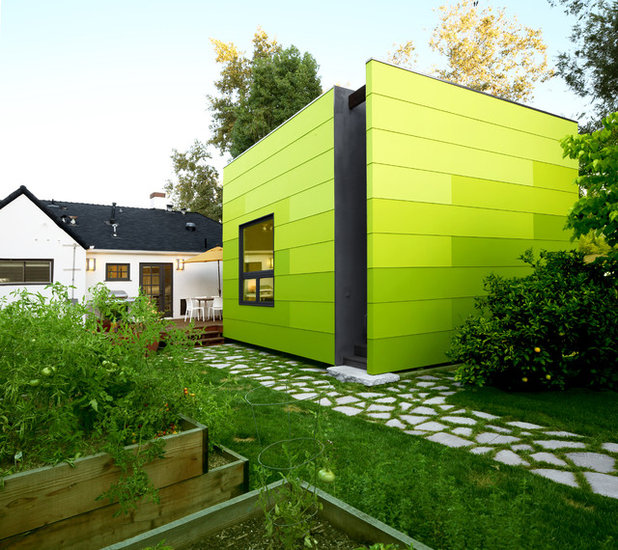
OKB Architecture
Recycled concrete. Breaking up and relaying concrete is another ecologically sound way to refurbish existing concrete. Broken-up pieces of sidewalk or used concrete paving stones can be used to build new paths, walkways or raised planters around your home and yard.
More: How to Tear Out That Old Concrete Patio
How to Pick the Right Floor for Your Garden Room





